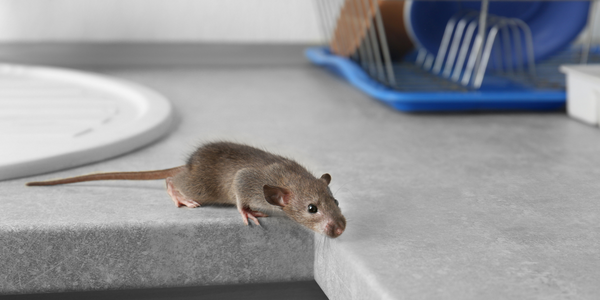
Is It Mice or Rats?
Mice and rats are common in New York homes, apartments, and businesses. Not only do they pose health risks to people and pets, but they can also cause significant property damage. If you suspect that you have mice or rats in your home, it is important to understand the differences between these rodents so that you can determine what type of pest you are dealing with.
What Do Mice Look Like?
Mice are small, brown rodents with a pointy snout, short ears, and a long tail (which they use like a fifth limb). Mice are nocturnal animals that can fit through holes the size of a quarter. Mice are considered commensal, which means they’re at least partially reliant on humans for their basic needs: food, water, and shelter.
Food-wise, mice prefer to eat seeds, fruits, nuts, and cereals. While mice prefer living alone or in pairs (like most pets) if there’s an abundance of food available in one area they may gather together for safety in numbers.
Signs of Mice
- Droppings: Mice leave behind small ( 1/8” to ¼” long), smooth, black, droppings with pointed ends that are often found in corners of rooms or around holes in walls. These may look like grains of rice and smell like ammonia.
- Urine: Mice can also leave behind urine stains on the surface of their area. The urine stains will appear as dark spots or streaks on walls and floors; they sometimes have a yellowish tinge.
- Scratching sounds: You may hear scratching inside your home, especially in your attic, ceiling, walls, or floors. Mice will likely be on the move in the nighttime in search of food.
- Damaged food boxes: Noticing chewed-up food boxes or plastic containers? You likely have a rodent problem.
What Do Rats Look Like?
Rats are larger than mice. They have long tails, thicker fur (with black or brown fur), long whiskers, and ears that stand up. The teeth of a rat are also much bigger than those of a mouse, and these rodents are powerful chewers, known to easily chew through electrical wires, for example, sometimes causing significant danger and damage to a home.
Signs of Rats
Similarly to mice, rats will leave behind some undeniable signs if they’ve gotten cozy inside your New York home.
- Droppings: Whereas mice have smaller droppings around the size of rice grains, rat droppings will be larger (around ½” to ¾” long), shiny black in color, and have blunt ends.
- Gnaw Marks: Rats will gnaw on wood, leaving behind teeth marks. As mentioned, they’ll also chew electrical wires in your home, such as those of major household appliances.
- Rub Marks: Rats have poor vision, so they rely on established paths along your home’s baseboards and walls to navigate. Because they have oils and dirt on their bodies, you may notice smudges and dark marks left behind on the surfaces they’re frequently brushing against.
- Scratching Sounds: Like mice, rats make scratching sounds, especially at night. Their gnawing sounds are often audible, too.
How to Prevent Mice and Rats
In addition to a regular pest control service, one of the most effective ways to prevent mice and rats in your home is some basic pest proofing. Do a thorough inspection of your home’s exterior to identify any vulnerabilities such as cracks or gaps which could serve as entry points for critters like mice and rats. Keep in mind that mice need only around a dime’s size amount of clearance to get inside your home, and rats need only a little bit more space around the size of a quarter!
Keep in mind that mice and rats are looking for basic needs (food, water, and shelter), so if you’re providing them with convenient access, they’ll try to get cozy in your home and stay a while.
It’s also always a good idea to keep your home free from clutter; both mice and rats enjoy hiding in small spaces like under furniture or behind baseboards, so if there’s nowhere for them to hide, you’ll have less to worry about!
Knock Out Your Mouse or Rat Problem
With fall around the corner, rodents like mice and rats will be on the move, looking for a warm place to call home for the winter.
Knock ‘em out before they become a problem—call (800) 244-7378 to schedule an estimate for your home.


